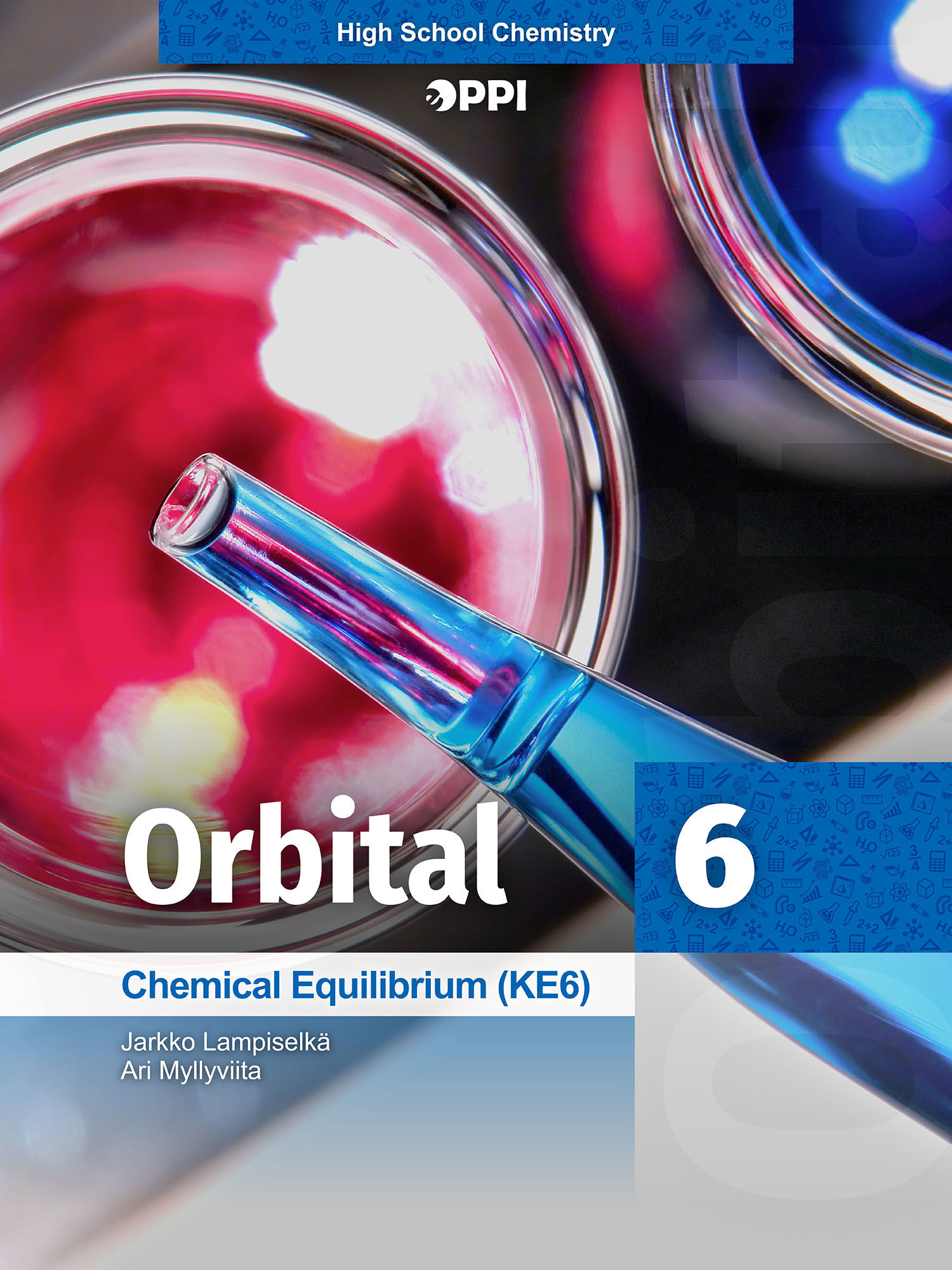
Authors
Jarkko Lampiselkä & Ari MyllyviitaExercises kit’s authors
Jarkko Lampiselkä & Ari MyllyviitaPublisher
Included in packages

-
The study kit contains 35 chapters and 62 exercises of which 2 are in the chapters and 60 in the task exercises.
-
Authors
Jarkko Lampiselkä & Ari Myllyviita -
Exercises kit’s authors
Jarkko Lampiselkä & Ari Myllyviita -
Subject
Chemistry, natural sciences -
Grade
High school -
Course
CHE6 Chemical Equilibrium -
Kit's language
English -
Publisher
e-Oppi Oy -
Included in packages
You are reading Orbital 6, an e-book for the module “CHE6 – Chemical Equilibrium”. The module introduces the concept of chemical equilibrium from both a quantitative and qualitative perspective.
The Orbital series is a modern learning material for chemistry that encourages the student to think about, investigate, and understand chemistry. The text is designed to captivate the reader. The examples feature important chemical processes and discoveries that are familiar from everyday life. In addition to traditional text explanations, animations, videos and 3D models have also been used to visualise processes. The tasks follow the new digital final exam model, progressing from tasks that test memory skills through concepts to practical and more challenging tasks.
Models and visualisation play a key role in learning chemistry. Chemistry is learnt by visualising your own thoughts and by presenting them to other students. Discussions help to develop our own thought processes. Modelling uses simulations, but you will also need a pen and paper. Students can freely choose between visualisation methods.
Chemistry is also learnt together. Learning is social in nature, so the material encourages students to work together.
Please note that the sample chapters only include automatically corrected Test your knowledge exercises. All the other exercises are located in the teacher's exercise stack, from where the teacher can share and assign tasks to students.
The book is in line with the Finnish upper secondary school curriculum (LOPS2021).
1. To the reader
Lead |
Chapter |
|---|---|
| 1.1. | Foreword |
2. Reaction rate
3. Chemical equilibrium
Lead |
Chapter |
|---|---|
| 3.1. | The dynamic nature of chemical equilibrium |
| 3.2. | Equilibrium constant |
| 3.3. | Illustrating an equilibrium reaction graphically |
| 3.4. | Factors that affect chemical equilibrium |
| 3.5. | Experiments |
4. Heterogenous equilibrium and solubility
5. Homogenous equilibrium
Lead |
Chapter |
|---|---|
| 5.1. | Homogenous equilibrium |
| 5.2. | Factors that affect homogenous equilibrium |
6. Acid-base equilibrium
Lead |
Chapter |
|---|---|
| 6.1. | Acid-base equilibrium |
| 6.2. | Saline solution pH |
| 6.3. | How an indicator functions |
| 6.4. | Titration |
| 6.5. | Buffer solution |
| 6.6. | Natural buffer systems |
7. Equilibrium calculations
Lead |
Chapter |
|---|---|
| 7.1. | Acid solution pH |
| 7.2. | Base solution pH |
| 7.3. | Buffer solution pH |
| 7.4. | Solubility product |
8. Chemistry in the living environment
Lead |
Chapter |
|---|---|
| 8.1. | The efficiency of chemical production |
| 8.2. | Natural cycles |
| 8.3. | Water resources and water usage |
| 8.4. | Acidification |
| 8.5. | Eutrophication |
| 8.6. | Plastic recycling |
9. Extras
Lead |
Chapter |
|---|---|
| 9.1. | For the teacher |


